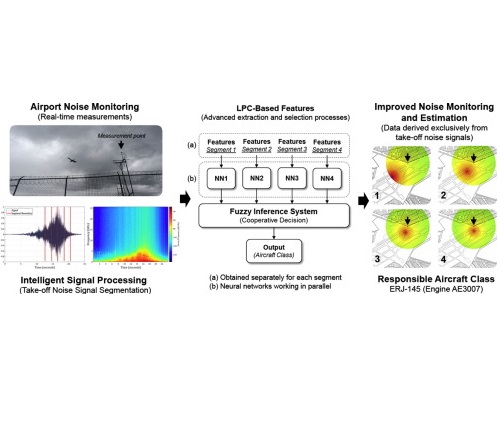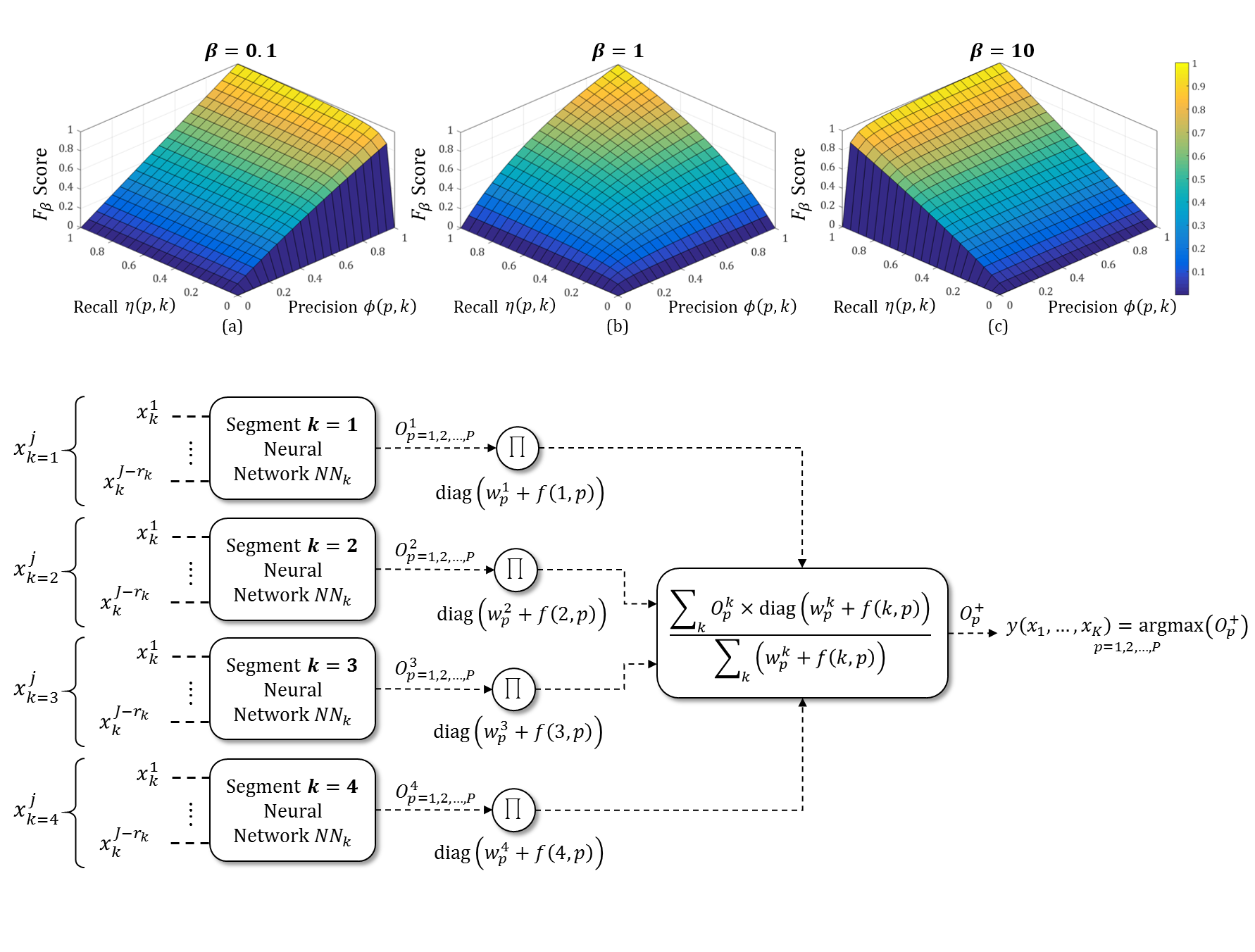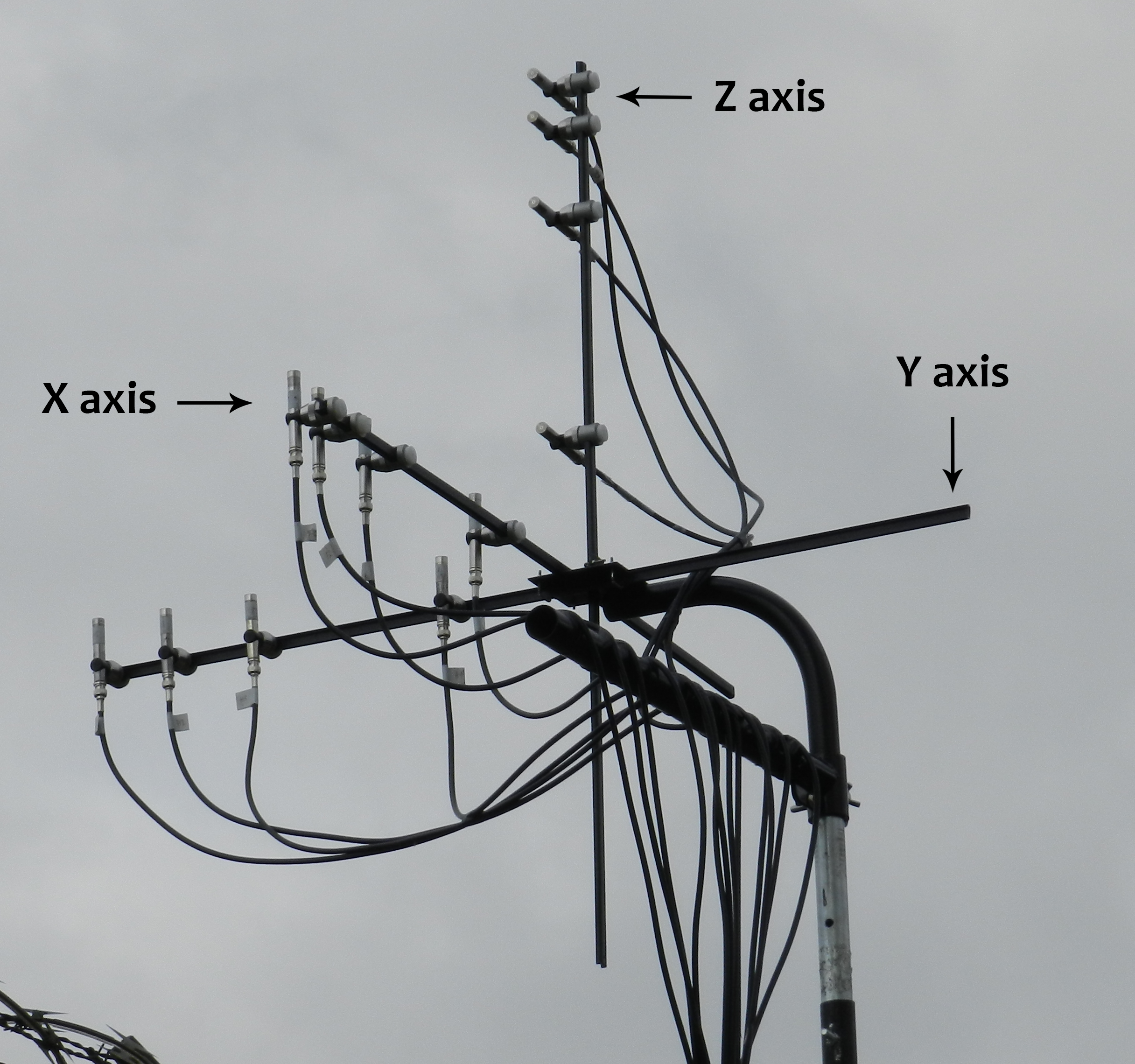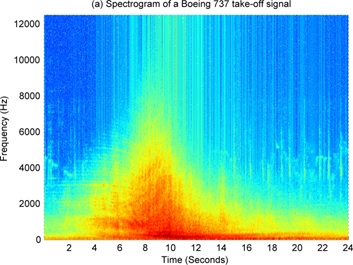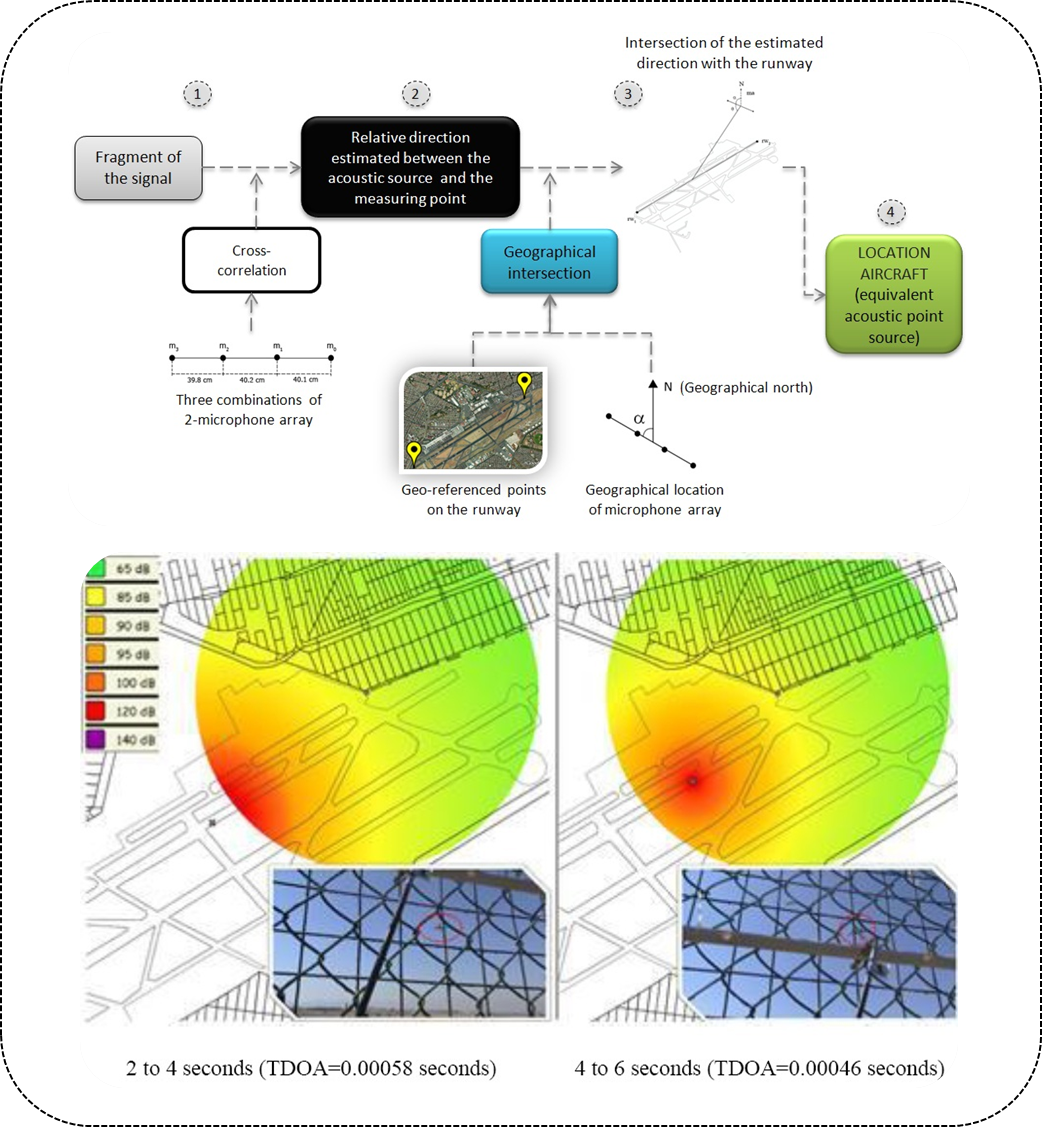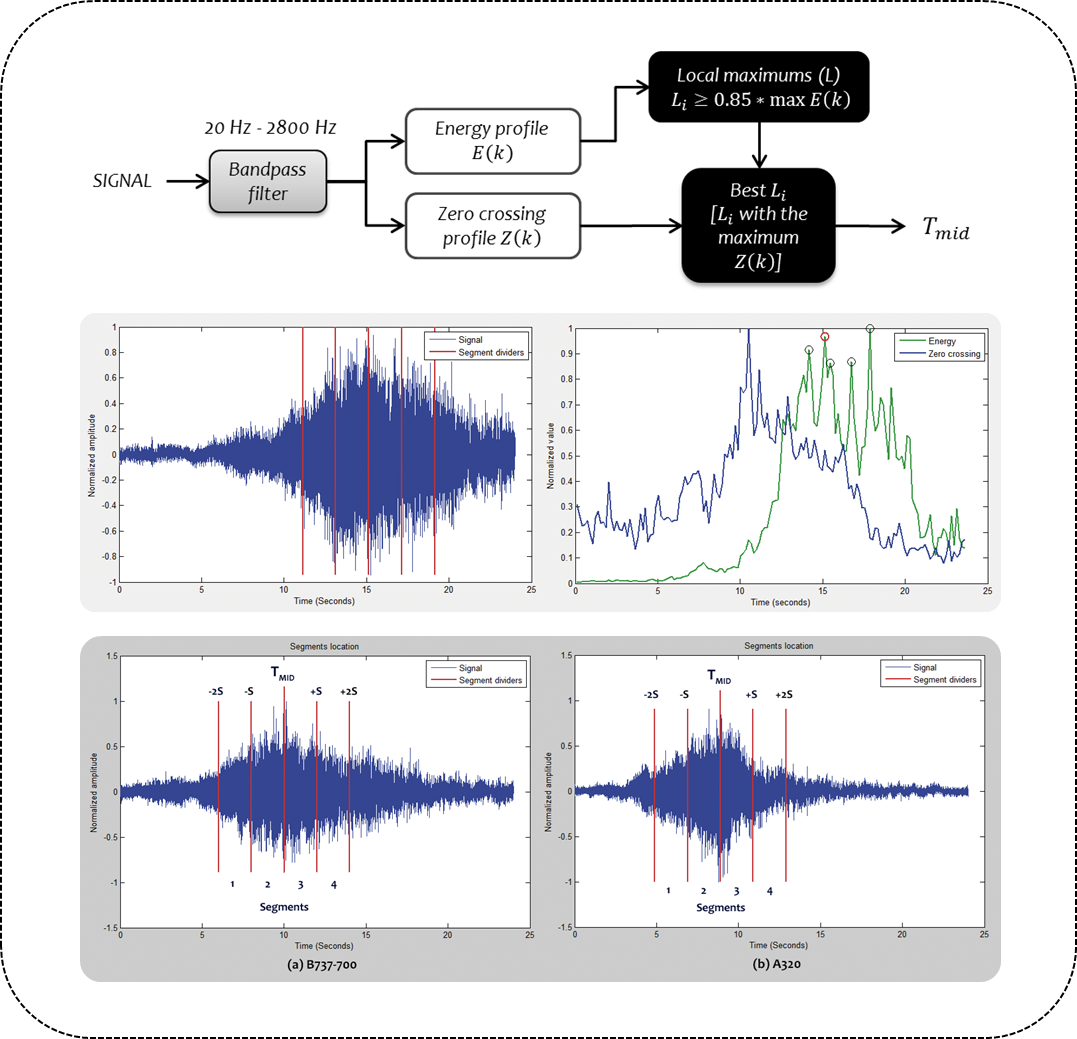Thesis Details
Basic information
Computational model for aircraft class identification based on spatio-temporal patterns extracted from aircraft take-off noise signal
Ph.D. in Computer Science
Finished
Detailed infomation
Abstract
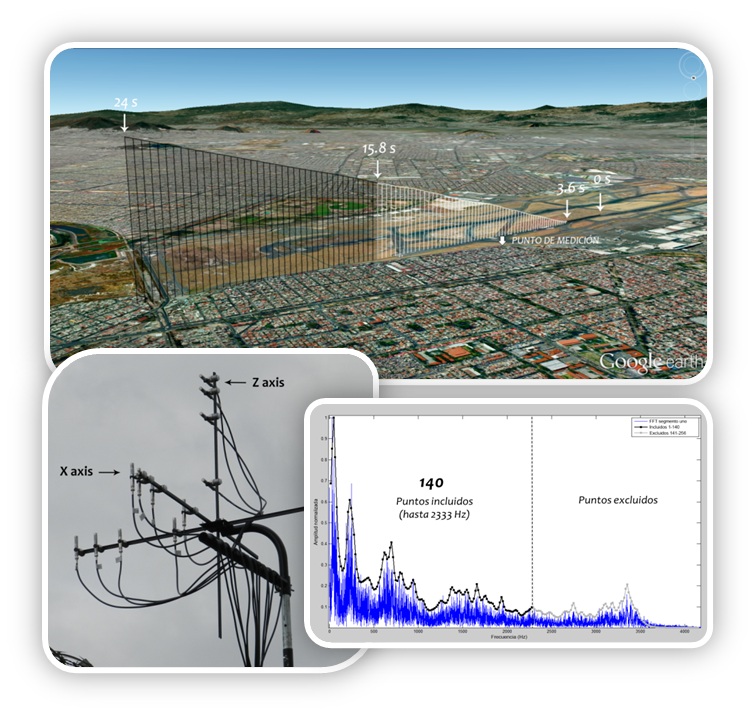 Assessment of aircraft noise has become a major concern for airports and aeronautical authorities, which is part of the efforts to fight environmental noise pollution, especially given the growing proximity between major cities and airports. This evaluation commonly requires noise monitoring or estimation around the airport and depends on matching noise levels to the generating aircraft class. In this respect, many major airports have built noise monitoring systems using permanent or moving measurement positions. Generally, these systems require external non-related noise inputs for matching noise levels at certain position with the responsible aircraft class, i.e., the noise signal is only used for computing statistical indicators. Also, multiple models for computing noise contours around airports have been defined. In this case, the noise estimation is based on single events modelling according to default or typical operations. That is to say, a subset of the total airport traffic is defined using an expected number of operations by aircraft class so that the flight path, mass and operating procedure are considered identical within the subset. Then, the noise level at the observer location is computed based on tabulations of the maximum instantaneous level or exposure level as functions of the propagation distance d for specific airplane types, variants, flight configurations and power settings P. Likewise, these models do not use the aircraft noise signal produced by real events. In this sense, many approaches have been considered in order to obtain more information from the aircraft noise recorded and either build self-contained noise monitoring systems or improve noise estimation around airports.
Assessment of aircraft noise has become a major concern for airports and aeronautical authorities, which is part of the efforts to fight environmental noise pollution, especially given the growing proximity between major cities and airports. This evaluation commonly requires noise monitoring or estimation around the airport and depends on matching noise levels to the generating aircraft class. In this respect, many major airports have built noise monitoring systems using permanent or moving measurement positions. Generally, these systems require external non-related noise inputs for matching noise levels at certain position with the responsible aircraft class, i.e., the noise signal is only used for computing statistical indicators. Also, multiple models for computing noise contours around airports have been defined. In this case, the noise estimation is based on single events modelling according to default or typical operations. That is to say, a subset of the total airport traffic is defined using an expected number of operations by aircraft class so that the flight path, mass and operating procedure are considered identical within the subset. Then, the noise level at the observer location is computed based on tabulations of the maximum instantaneous level or exposure level as functions of the propagation distance d for specific airplane types, variants, flight configurations and power settings P. Likewise, these models do not use the aircraft noise signal produced by real events. In this sense, many approaches have been considered in order to obtain more information from the aircraft noise recorded and either build self-contained noise monitoring systems or improve noise estimation around airports.
One of the aforesaid approaches is the real-time aircraft class recognition based on features obtained from the take-off noise signal, i.e., now real-time measurements not only make available noise levels calculation but also provide the airplane type producing it. In this work, a new methodology for aircraft class recognition based on the take-off noise signal segmentation is proposed. In this respect, a feature extraction method is defined along with several decision by committee algorithms based on dynamic hierarchical aggregation of the multiple outputs from parallel classifiers. Performance of the proposed models is benchmarked on two databases with take-off noise real-time measurements. A new strictly cross-checked database is introduced including more complex classes and real-time take-off noise measurements from modern aircrafts. In this sense, a measuring system able to synchronize up to twelve acoustic pressure sensors used in a microphone array is designed and implemented. Performance of all the proposed models is superior to those existent in the literature after being tested on both databases.
This work is linked to the following research projects:
Research project CONACyT I010/532/2014, MOD.ORD/42/2014, CB-2013-01, 000000000222424, titled "Methods for pattern recognition and analysis of vibroacoustic signals", 2015-2017.
Research project CONACyT 51283-Y, CB-2005-1, 000000000025305, titled "Advanced environmental sound and vibration monitoring system", 2007-2011.
Authors
Directors
Publications
Awards
Highlights and contact
Newsletter Signup
Find out all group news and updates by subscribing to our website.




